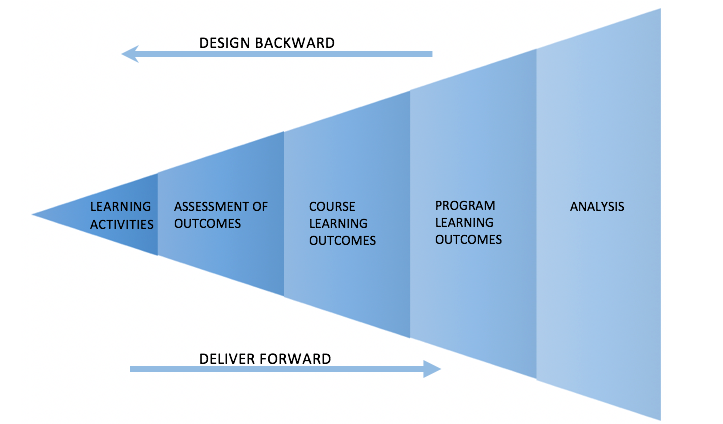Main Body
A Brief Overview of Teaching and Learning by Design
By the end of this book, you will be able to:
Design and deliver engaging programs and courses, grounded in contextual and student analysis, with aligned learning outcomes, assessments, and learning activities.
Teaching and Learning by Design at Yukon College follows general “backward design” principles to support the development of new programs in particular, but can be adapted to support course design, re-design and on-going course improvements.
Here is an outline of the process:

Analysis
Understanding Yukon College’s unique context and institutional goals shapes how we develop, deliver, and assess programs and courses.
Learning Outcomes
Meaningful program outcomes stem from strong analysis and produce quality graduates.
A learning outcome is a statement that describes what students will be able to know, do, feel, and/or model by the end of a process of learning. By nature, outcomes are measurable.
Program Learning Outcomes are high-level in nature and are assessed throughout the courses in the program.
Course Learning Outcomes are subject-specific and tied to program learning outcomes and course assessment.
Assessment
Meaningful assessment ensures students are meeting course and program outcomes.
Learning Activities
Relevant learning activities engage students in meeting course outcomes.
Sources
You may also want to read this article The Power of Course Design to Increase Student Engagement and Learning by L. Dee Fink, former director of the Instructional Development Program, University of Oklahoma.

